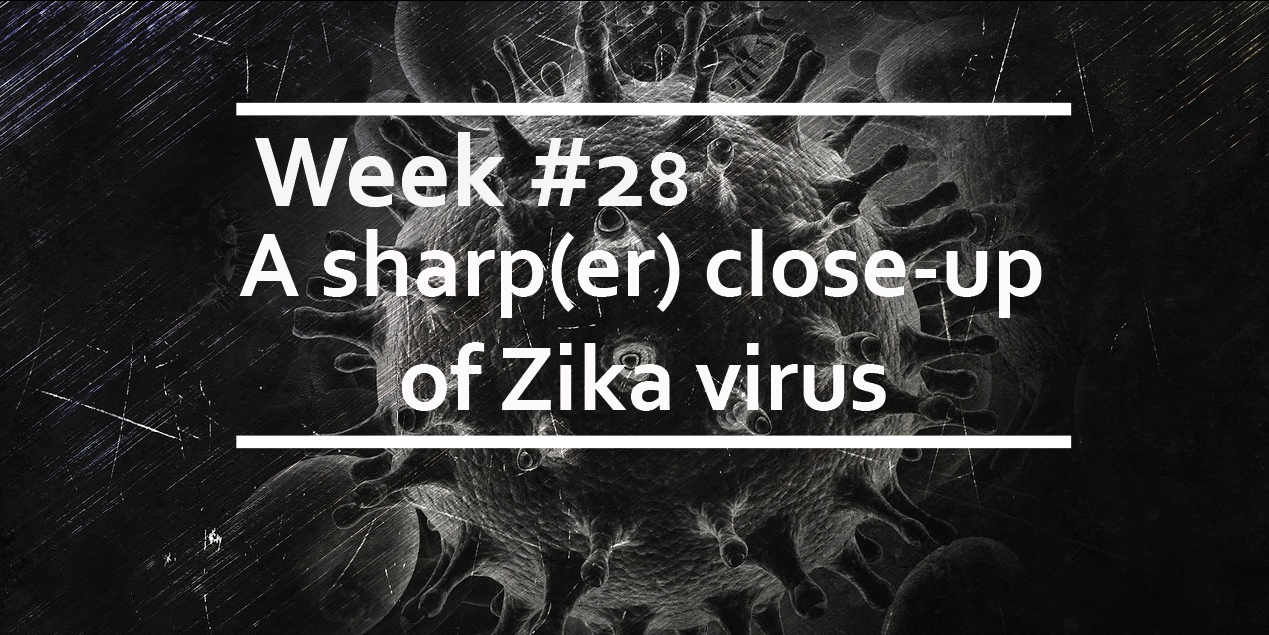A sharp(er) close-up of Zika virus
Structural information on flaviviruses, including dengue (DENV, immature, mature, and fusogenic), Japanese encephalitis (JEV, mature), Tick-borne encephalitis (mature), West Nile virus (immature and mature), and Zika (ZIKV, mature and immature), have already been defined, alone or in combination with neutralizing antibodies. This has provided important information on the structural and functional characteristics of the envelope proteins E and (pr)M. Recently, however, Sevvana et al. have reported an even higher resolution structure of mature ZIKV at 3.1 Å, revealing new insights on some critical regions of the ZIKV surface. How can we use this information?
What did we know already?
Like all members of the flavivirus group, ZIKV particles have an icosahedral symmetry, a diameter of about 500 Å, and are constituted by a host-derived lipid membrane exposing the viral proteins (pr)M and E. In their mature conformation, particles are made of 90 dimeric E-M heterodimers. E consists of three beta-barrel domains: E-DI, E-DII, and E-DIII, anchored to the plasma membrane by two transmembrane helices, E-T1 and E-T2. E-DI is formed by nine beta-strands (A0 to I0), and three small helices. This domain comprises Asn154, an amino acid that is glycosylated and that has been implied in ZIKV neurovirulence. E-DII also has nine beta-strands (a-i) and two helices, which make up the fusion loop (residues 98–109). E-DIII, important for receptor binding, consists of strains A-G. Previous studies also revealed that, from a structure-based phylogeny, ZIKV appears to be close to the neurovirulent members of the flavivirus family.
What’s new?
In work by Sevanna and colleagues, 2,085 cryoEM micrographs were used to select about 36,000 ZIKV particles (French Polynesia strain H/PF/2013) to be used to generate a cryomap at an average resolution of 3.1 Å. This allowed good resolution of almost all the side chains, loops, and disulfide bonds, and also of the H-bond networks that control assembly. While this structure confirms the general fold of the E monomers in the icosahedral arrangement, it revealed that the immediate environment of each monomer is fairly different. Structure-based sequence alignments of flavivirus E shows high conservation of strands A0 to D0 in E-DI, the fusion loop, the dimerization helix, and the E-DI-DIII hinges. Conversely and unsurprisingly, the surface exposed loops and the glycan loop were more variable. Again, more conservation was shown between the neurovirulent flaviviruses than in DENV or Yellow Fever virus.
From structure to function
The surface exposed E-DIII loops of ZIKV, DENV, and JEV are involved in receptor binding and determine cellular tropism and infectivity. These regions also show some large structural variations between the three viruses, with the largest difference being in the glycan loop region and its immediate environment, which is likely to explain the different sensitivities to neutralizing antibodies. The ZIKV Asn154 glycosylation site, as well as the equivalent glycosylation sites in the other flaviviruses, sit in these variable regions and might contribute to virus interaction with attachment factors, and possibly with binding to unique receptors. Another interesting observation is that the glycan loop in ED-I, which also contributes to the interaction between E monomers, is ~8 amino acids longer and closer to the fusion loop in the neurovirulent flaviviruses than in DENV, raising the possibility that an interaction between the glycan loop and a putative receptor on the host cells facilitate the exposure of the fusion loop, thereby facilitating the formation of fusogenic E trimers and, therefore, membrane fusion. The authors do not address the role of low endosomal pH in the formation of the fusogenic complex, but their hypothesis suggests that either both acidic pH and the glycan loop contribute to the conformational change that triggers fusion, or that fusion also occurs at higher pH, as previously determined for other flaviviruses (e.g., DENV). This is an interesting hypothesis that should be tested through mutagenesis or inhibition of endosomal acidification. The E-M heterodimers are held together by interactions between E-E, E-M, and M-M proteins. However, compared to other flaviviruses, in ZIKV more and larger regions of the M proteins are involved in this interaction. This might explain why mature ZIKV retains its structure even at relatively high temperatures (where DENV, for example, would be degraded) while its infectivity decreases, similarly to other flaviviruses. There also seem to be clear differences in the type of amino acid adjacent the surface-exposed motifs, and this may itself contribute to cell tropism. Importantly, detailed knowledge of these sites could help determine the volume of drug-accessible pockets that can be targeted therapeutically.
Outlook
CryoEM and crystallographic structures provide a useful snapshot of a virus in isolation. High-resolution images can further refine the information that we have available, also revealing interesting differences between viruses of the same family that might help to explain tropism and pathogenicity. However, these remain snapshots, and it is important to follow up the most interesting hypotheses suggested by these studies in relevant cell models, with mutagenesis and inhibitors studies. Now that we better know what ZIKV looks like, we should see if we can bring it down.




